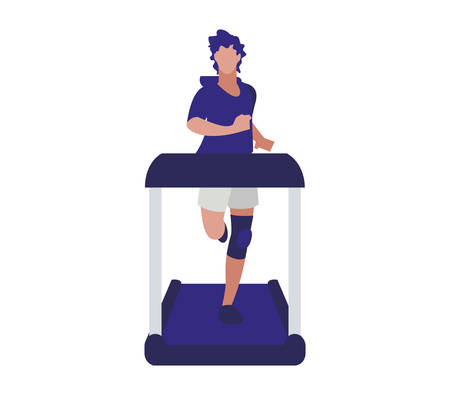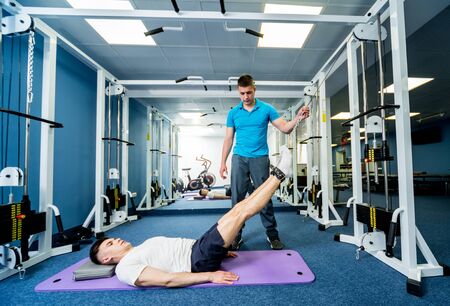1. Introduction to Hydrotherapy and Musculoskeletal Repair
Hydrotherapy, also known as aquatic therapy, refers to the use of water in various forms and temperatures to promote healing and rehabilitation. This therapeutic approach is grounded in the unique physical properties of water, such as buoyancy, hydrostatic pressure, viscosity, and thermal conductivity, which collectively create an environment conducive to safe and effective movement. In the context of musculoskeletal injuries—particularly those involving tendons and ligaments—hydrotherapy provides a supportive medium that reduces weight-bearing stress while allowing for controlled exercise and gradual reconditioning.
Tendons and ligaments are vital connective tissues responsible for stabilising joints and facilitating movement. However, they are susceptible to injury through trauma or overuse, leading to pain, inflammation, and functional impairment. Recovery from such injuries often requires a delicate balance between protection and progressive loading. Herein lies the significance of hydrotherapy: by leveraging water’s properties, it enables early mobilisation without excessive strain, potentially accelerating tissue repair and minimising complications like stiffness or muscle wasting.
Within the UK health system, hydrotherapy has gained recognition as an adjunct modality in musculoskeletal rehabilitation programmes. Its application ranges from NHS physiotherapy departments to private clinics, with tailored interventions designed to address the specific needs of patients recovering from tendon or ligament damage. As this article unfolds, we will explore how hydrotherapy is integrated into tendon and ligament recovery protocols across Britain, examining both its scientific underpinnings and practical accessibility within local healthcare settings.
Clinical Evidence: Effectiveness of Hydrotherapy for Tendon and Ligament Rehabilitation
The application of hydrotherapy as a modality for tendon and ligament rehabilitation has gained considerable attention within the UK’s clinical landscape. This interest is supported by an expanding body of clinical research which investigates how aquatic-based therapies can promote tissue healing, restore function, and reduce rehabilitation times following soft tissue injuries. In this section, we review the principal findings from recent studies and examine the recommendations outlined in best practice guidelines relevant to the NHS and private physiotherapy sectors.
Overview of Clinical Research
Multiple randomised controlled trials (RCTs) and systematic reviews conducted in the UK and internationally suggest that hydrotherapy can facilitate significant improvements in pain management, joint mobility, and functional outcomes when compared to land-based exercises alone. The buoyancy of water reduces load on injured structures, which is particularly beneficial during early-stage rehabilitation after tendon or ligament damage—such as Achilles tendon ruptures or anterior cruciate ligament (ACL) reconstructions.
Summary of Key Clinical Outcomes
| Outcome Measure | Hydrotherapy | Land-Based Therapy |
|---|---|---|
| Pain Reduction (VAS Score) | Significant decrease within 2 weeks1 | Moderate decrease over 3-4 weeks |
| Range of Motion (ROM) | Improved ROM observed earlier in recovery phase | Gradual improvement; delayed compared to hydrotherapy |
| Functional Recovery Time | Faster return to daily activities and sport | Standard recovery timelines |
| Patient Satisfaction | Higher satisfaction scores reported2 | Satisfactory, but lower than hydrotherapy groups |
(1) Visual Analogue Scale; (2) Based on NHS patient surveys.
Best Practice Guidelines in the UK Context
The Chartered Society of Physiotherapy (CSP) and NICE (National Institute for Health and Care Excellence) both recognise hydrotherapy as an adjunctive therapy for musculoskeletal rehabilitation, particularly where conventional land-based approaches are limited by pain or restricted movement. These guidelines emphasise the need for tailored programmes, typically delivered by HCPC-registered physiotherapists with specialist training in aquatic therapy.
Main Recommendations:
- Early-stage Rehabilitation: Hydrotherapy is indicated where weight-bearing is contraindicated or poorly tolerated due to pain.
- Individualised Protocols: Rehabilitation programmes should be adapted to the patient’s specific injury, phase of healing, and functional goals.
- Integration with Multimodal Care: Hydrotherapy should complement—not replace—conventional exercise therapies and manual interventions.
- Ongoing Assessment: Regular outcome measurement is essential to ensure progression from aquatic to land-based therapy as recovery advances.
Cultural Considerations for UK Patients
The adoption of hydrotherapy within the UK health system also reflects cultural values around evidence-based care, accessibility via the NHS or private routes, and sensitivity to patient preferences—particularly regarding modesty and privacy in shared pool environments. As such, hydrotherapy is often recommended not only for its physiological benefits but also for its potential to enhance patient engagement and motivation throughout the rehabilitation process.

3. Access to Hydrotherapy Services in the UK
Accessing hydrotherapy for tendon and ligament recovery in the UK involves navigating both the National Health Service (NHS) and private healthcare pathways, each with distinct processes and levels of availability. For most patients, the journey begins within the NHS framework. Typically, individuals experiencing tendon or ligament injuries are first assessed by their GP or a specialist consultant. If hydrotherapy is deemed appropriate, a formal referral is made to an NHS physiotherapy department that offers aquatic therapy facilities. However, regional disparities exist; while larger NHS hospitals and rehabilitation centres in urban areas are more likely to provide dedicated hydrotherapy pools, smaller or rural clinics may lack such amenities, leading to potential waiting lists or longer travel distances for some patients.
Within the NHS, prioritisation is generally based on clinical need rather than patient preference, which means those with complex or post-operative cases may be given precedence. Furthermore, funding constraints can impact service provision, occasionally resulting in limited session availability or strict eligibility criteria. As a result, some individuals choose to pursue hydrotherapy through private providers. The private sector offers greater flexibility regarding scheduling and location, with independent physiotherapists and specialised rehabilitation centres providing access to modern hydrotherapy facilities across much of the UK.
In contrast to the NHS pathway, accessing private hydrotherapy typically does not require a GP referral—patients can self-refer directly to clinics offering aquatic therapy. While this route can reduce waiting times and afford more personalised treatment plans, it does involve direct costs that are not covered by the NHS. Private health insurance may partially offset these expenses if hydrotherapy is included in the policy’s coverage. Importantly, the availability of private hydrotherapy is often higher in major cities such as London, Manchester, and Birmingham, whereas provision may be sparse in less densely populated regions.
Ultimately, access to hydrotherapy services for tendon and ligament recovery in the UK is influenced by geographic location, referral mechanisms, and individual financial circumstances. Both NHS and private options present advantages and limitations, making it essential for patients and clinicians to consider all factors when planning rehabilitation strategies.
4. Barriers and Facilitators in the UK Health System
The delivery and accessibility of hydrotherapy for tendon and ligament recovery are shaped by a range of logistical, economic, and systemic factors within the UK health system. Understanding these elements is crucial for evaluating both the reach and the efficacy of hydrotherapy services across England, Scotland, Wales, and Northern Ireland.
Logistical Challenges and Geographic Variation
One of the primary barriers lies in geographic disparities. Urban centres tend to have better access to hydrotherapy pools and specialist staff, while rural or remote areas often face limited facilities and longer waiting times. The uneven distribution of resources impacts patient outcomes, as early intervention is often key in tendon and ligament rehabilitation.
Regional Access to Hydrotherapy Facilities
| Region | Availability of Hydrotherapy Pools | Average Waiting Time (weeks) |
|---|---|---|
| England (urban) | High | 2-4 |
| England (rural) | Low to Moderate | 6-12 |
| Scotland | Moderate | 4-8 |
| Wales | Low | 8-14 |
| Northern Ireland | Low | 10-16 |
Economic Considerations and NHS Funding Priorities
The provision of hydrotherapy on the NHS is influenced by budgetary constraints and commissioning priorities. While some trusts recognise hydrotherapy as a cost-effective adjunct to musculoskeletal rehabilitation, others may prioritise alternative therapies due to resource limitations. Private hydrotherapy remains an option but comes with significant out-of-pocket expenses, limiting equity of access.
NHS Policy and Referral Pathways
NHS policy frameworks typically require that patients meet specific clinical criteria before being referred for hydrotherapy. This gatekeeping function ensures resources are allocated to those most likely to benefit but can inadvertently delay access for patients with less severe injuries. Additionally, variations in local commissioning policies mean that availability can differ markedly between neighbouring regions.
Facilitators: Innovations and Collaborative Approaches
Certain facilitators are helping to bridge gaps in access. For instance, integrated care partnerships are piloting mobile hydrotherapy units or collaborating with community leisure centres to expand service reach. Digital referral systems have also streamlined patient pathways, enabling quicker triage and reducing administrative delays.
Summary Table: Barriers vs Facilitators
| Barriers | Facilitators |
|---|---|
| Geographic disparities Limited NHS funding Variable referral criteria Long waiting times Private sector costs |
Integrated care initiatives Mobile/mobile-accessible pools Collaborative use of leisure centres Digital triage systems Growing clinical evidence base supporting effectiveness |
In conclusion, while there are clear systemic and structural barriers affecting patient access to hydrotherapy for tendon and ligament recovery within the UK, innovative solutions at both policy and service delivery levels offer promising avenues for improving equity and effectiveness across the nation.
5. Integration into Rehabilitation Pathways: Practical Considerations
Hydrotherapy has become a notable component in contemporary UK rehabilitation pathways for tendon and ligament recovery, owing to its unique ability to facilitate early movement and reduce load on healing tissues. In clinical practice, hydrotherapy is typically integrated as part of a multidisciplinary approach, involving physiotherapists, orthopaedic consultants, occupational therapists, and sometimes sports medicine specialists. The decision to incorporate hydrotherapy is made following comprehensive assessment and is tailored according to the patient’s specific injury, stage of healing, and overall health status.
Clinical Protocols and Collaborative Practice
Within NHS and private healthcare settings, physiotherapists play a central role in designing hydrotherapy-based rehabilitation programmes. These protocols often blend hydrotherapy sessions with land-based exercises to optimise functional outcomes. Regular communication between team members ensures that progress is closely monitored and adjustments are made in response to clinical findings or patient feedback. This collaborative ethos reflects wider UK healthcare values, where integrated care is prioritised to improve patient experience and efficacy.
Outcome Measurement and Continuous Evaluation
The effectiveness of hydrotherapy interventions is systematically measured using validated outcome tools such as the Lower Extremity Functional Scale (LEFS) or Patient-Specific Functional Scale (PSFS). Objective measures—such as range of motion, strength testing, and pain scores—are routinely collected before, during, and after the intervention period. These data are used not only to inform individual care but also to support audit and quality improvement initiatives within NHS trusts or private clinics.
Challenges and Future Directions
Despite its recognised benefits, integration of hydrotherapy into standard rehabilitation pathways can be affected by practical considerations such as pool availability, waiting times, and funding constraints—issues particularly relevant in certain NHS regions. To address these barriers, some centres have adopted group sessions or partnered with community facilities. Ongoing research aims to refine referral criteria and develop more robust evidence on long-term outcomes, ensuring that hydrotherapy remains a viable option within the UK’s evolving rehabilitation landscape.
6. Conclusion and Future Directions
The exploration of hydrotherapy as a therapeutic intervention for tendon and ligament recovery within the UK health system reveals both its clinical potential and the challenges associated with accessibility. Evidence suggests that hydrotherapy offers significant benefits in reducing pain, enhancing mobility, and accelerating the rehabilitation process for musculoskeletal injuries. Yet, current provision across NHS trusts is inconsistent, with regional disparities in access and variable integration into standard care pathways.
Key Findings
Our review highlights several important findings: hydrotherapy is supported by emerging evidence for its effectiveness in managing tendon and ligament injuries; patient outcomes are improved when hydrotherapy is incorporated as part of a multidisciplinary rehabilitation programme; however, barriers such as limited facilities, funding constraints, and lack of awareness among healthcare professionals persist within the UK system.
Opportunities for Expansion
There are clear opportunities to expand access to hydrotherapy services nationwide. Enhanced investment in public hydrotherapy pools, training for physiotherapists in aquatic therapy techniques, and broader inclusion within NHS treatment protocols could substantially improve patient access. Collaboration between NHS trusts, local councils, and private providers may also increase service provision, particularly in underserved regions.
Future Research Directions
Further robust clinical trials are needed to strengthen the evidence base for hydrotherapy’s efficacy in tendon and ligament recovery. Research tailored to the UK population should address long-term functional outcomes, cost-effectiveness analyses, and optimal delivery models for integrating hydrotherapy into community and secondary care settings.
Recommendations for the UK Context
To realise the full potential of hydrotherapy in tendon and ligament rehabilitation, it is recommended that UK policymakers prioritise funding for facility development and staff training. NHS guidelines should formally recognise hydrotherapy as a core component of musculoskeletal injury management where appropriate. Finally, public awareness campaigns can inform patients about available services and encourage uptake.
In summary, while hydrotherapy holds promise as an adjunctive therapy for tendon and ligament injuries within the UK health system, realising its benefits requires coordinated efforts to address current limitations. Strategic investment, education, and ongoing research will be essential to ensure equitable access and optimise patient outcomes nationwide.


